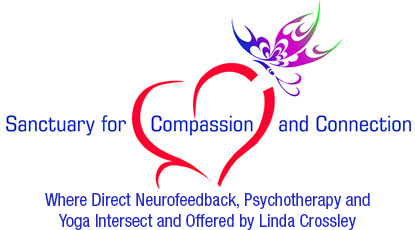5 Intention-setting Ideas for Helping Kids Reduce Anxiety
Each May, I feel it is so important to promote Mental Health Awareness month, as it is a belief of mine (backed by recent research) that when we support the health of the brain/mind, our bodies respond in kind.
This year I would like to focus on the 2018 Children’s Mental Health Report from the Child Mind Institute, reflecting on the significant increase in child and adolescent anxiety disorders. Below are some of the highlights:
- In the past 10 years, there has been increasing recognition of anxiety in young people by health care providers, including a 17% increase in anxiety disorder diagnosis. Yet anxiety symptoms are minimized or ignored. As little as 1% of youth with anxiety seek treatment in the year symptoms begin.
- At some point, anxiety affects 30% of children and adolescents, yet 80% never get help.
- Untreated anxiety disorders are linked to depression, school failure and a two-fold increase in risk for substance use disorder and suicide.
- The average age of onset for Separation Anxiety Disorder and specific phobias is age 11.
- The average age on onset for Social Anxiety Disorder is age 14.
- Practice Relaxation Exercises. If your begin to feel yourself getting stressed out over something, maybe you get stuck in traffic or you feel overwhelmed by the amount of work (think homework!) ahead of you, consider cutting off the stress-to-anxiety circuitry by taking a breather! Bee’s breath is a fun one that kid’s love because they get to make sounds and visualize themselves flying back home to the ‘family hive’ for a sweet treat. Take a few moments to learn how to do it yourself and add it to your toolkit to do in front of your kids, inviting them to join you to clear their minds and soothe their bodies.
- Face Your Fears. We all have them, whether we are afraid of spiders or dogs or flying or thunder and lightning or being alone. Knowing that fear is part of the basic human condition brings with it some comfort in understanding we are not alone in this experience. So, if we can admit we have one and then take a step towards our fear (instead of running away from it), we model our ability to experience both fear and confidence in our ability to conquer our fear. And, don’t forget to reward yourself afterwards to provide additional motivation to lean into our fears, reminding ourselves that fear is an emotion that will pass if we let it.
- Mindfulness. Anxiety arises when the mind gets caught in the ‘what if’ loop, whether about the future or the past. So, helping the mind to break that loop, by focusing on the present moment for even a few moments, will help in reducing the level of anxiety. Again, we can do this with our children so they learn this self-care tool from us. Consider practicing right now – sit comfortably and begin to allow the awareness of the mind to focus on all of your senses. Maybe start with the sense of touch, where the body is connected to something whether the ground beneath the feet or the body resting in the chair. Move to what your eyes can see, noticing the colors and textures of the items in your view. What might you be smelling or tasting?What do you hear – perhaps noticing the sounds in the distance first and then moving to the sounds closest to you. Last, you might consider allowing yourself to sense into the body and simply labeling what you might be feeling, such as tension in a part of your body, or a temperature, or even a sense of that fear or anxiety. Practicing this together once a day, even when you are not feeling anxious (perhaps right before going to bed) for a minute or two will give the gift of mindfulness for a lifetime!
- Self-talk. We all talk to ourselves and setting an intention to be more transparent with it can be transforming. Consider talking out loud, expressing your thoughts verbally to the universe. The first thing we might notice is how biased (towards self-harm) our thoughts might be, which starts to raise our awareness around the energy these thoughts carry. Once aware of such energy, begin a dialogue with yourself to challenge those heavy thoughts, by offering yourself a different perspective, one that a dear friend might offer you. Once you have practiced this for awhile, you might begin to demonstrate such dialogues in front of your children, admitting that you too have negative thoughts yet you create space for different ways of looking at things and how you might respond to someone you care about that might also have such negative thoughts.
- Self-compassion. One of the most powerful gifts we can offer to and model for the next generation is the practice of self-compassion. It is important to not only acknowledge our successes, but also our failures, without beating ourselves up. It is only through the acceptance of our humanness, with both gifts and flaws, that we truly step into our authentic skin and be the shining light in the darkness. Owning and expressing our imperfections to others is quite powerful, as it begins to empower others to step onto the path of self-acceptance. We are spiritual beings having a human experience and, as such, we will trip and fall and make mistakes along the path as this is how we learn. Reminding ourselves – and our children – that in order to discover our true gifts, sometimes we need to stumble through the heap of mistakes. Consider setting an intention to use a mantra of “I am (you are) human and perfectly imperfect” as a response to mistakes, failures and flaws!



